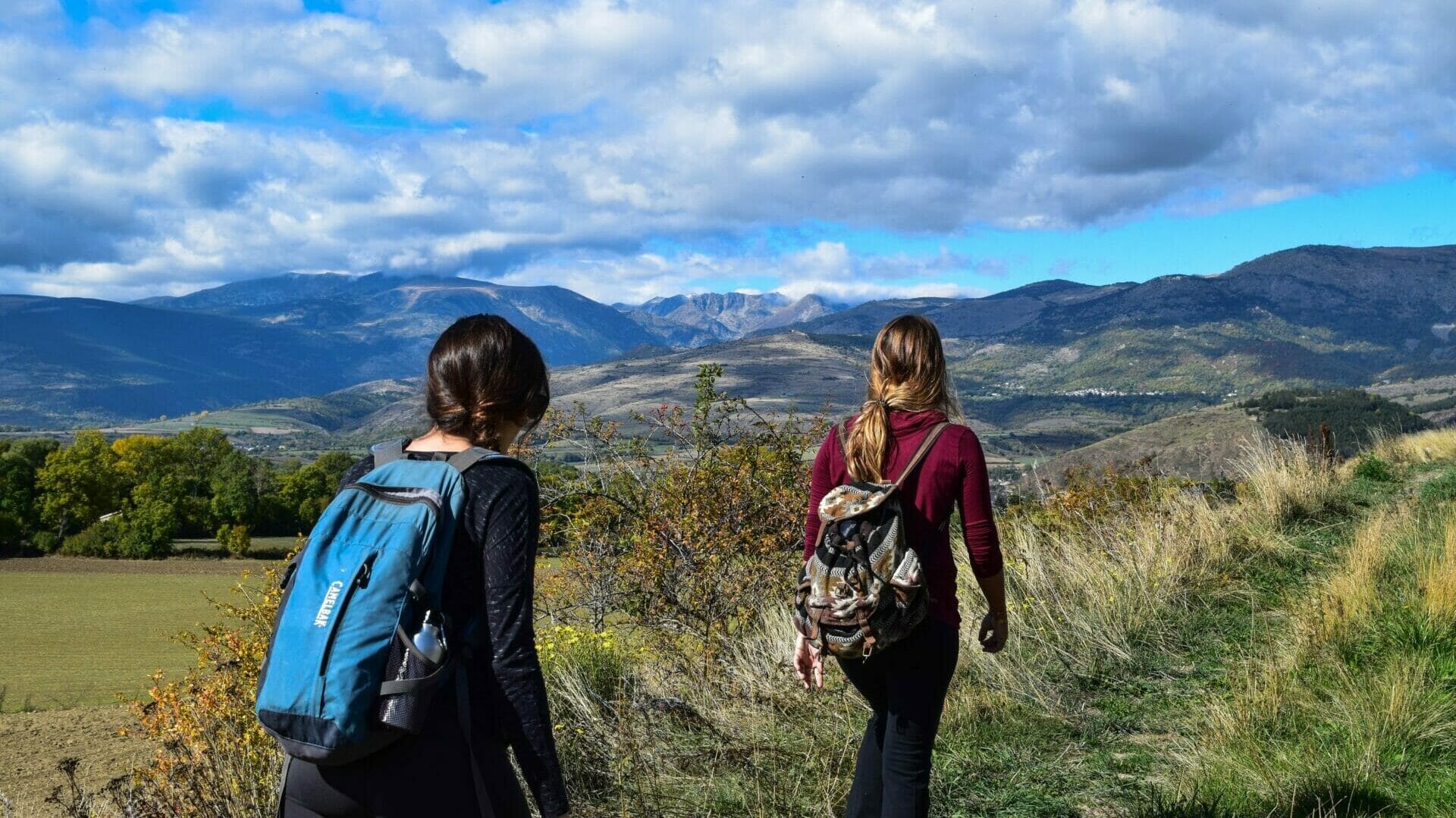From Toes to Thighs : Why Is Hiking Such A Complete Lower Body Workout? Let’s Know
Well, let me tell you, hiking is a real workout for the lower body. When I hit the trails, I feel the burn in my legs, glutes, and core with each step. From the moment I start the hike, I feel my muscles working to support me and keep me balanced on the uneven terrain.
The ascent is particularly challenging, as I constantly push against gravity to lift my legs and move forward. And even on the descent, my legs still work hard to control my speed and maintain my balance as I navigate steep and rocky terrain.
With every step, I feel my quads, hamstrings, and calf muscles flexing and contracting to support me. And let’s not forget about the stabilizing muscles in my hips, pelvis, and lower back, which are constantly engaged to keep me steady. Let’s have some deep conversation about it.
How To Train For Hiking In High Altitude : 5 Key Points

Why Is Hiking Such A Complete Lower Body Workout ?
Hiking offers a comprehensive lower body workout that engages multiple muscle groups, improves cardiovascular fitness, and provides mental health benefits. By incorporating uphill climbs, downhill descents, varied terrains, and a focus on stability and balance, hiking becomes a rewarding and effective exercise. So lace up your boots, hit the trails, and experience the transformative power of hiking on your lower body and overall well-being.
When you hike, you use your upper body straight to keep you balanced and moving forward, but you use your legs to power you up and down the trail.
This combination of upper and lower body workout is incredibly complete and can really help tone your legs and core. Not only does hiking work all of your leg muscles, but it can also be done in a variety of different ways to challenge yourself.
Here are some of the benefits of hiking that make it such a complete workout:
Uphill climbing:
When you ascend steep inclines while hiking, it engages your quadriceps (front of the thighs), hamstrings (back of the thighs), and gluteal muscles (buttocks). Personally, I remember the burn in my thighs and buttocks as I conquered challenging uphill trails. It’s an intense workout that strengthens and tones these muscles, contributing to better overall lower body strength and power.
Downhill descent:
Descending slopes puts stress on your quadriceps and engages the muscles in your calves. I recall feeling the strain in my thighs and the need to stabilize my movements using my calf muscles while navigating downward paths. This not only helps build strength in these muscle groups but also enhances control and stability.
Constant resistance:
Hiking on varied terrains such as rocky paths, loose gravel, or uneven surfaces provides constant resistance to your lower body muscles. It’s like a natural gym workout, where every step challenges your muscles, leading to increased strength and endurance. I love how hiking offers a diverse range of resistance, making the workout both engaging and effective.

Stabilization and balance:
Negotiating uneven trails and maintaining balance on rugged surfaces requires the activation of stabilizer muscles, such as the hip abductors and adductors. These muscles stabilize the pelvis and maintain balance, preventing any wobbling or potential falls. I found that by strengthening these muscles, my overall balance and stability significantly improved.
Core engagement:
Hiking engages your core muscles, including the abdominal muscles and obliques. As you ascend, descend, or navigate uneven terrain, these muscles work tirelessly to stabilize your body. I remember feeling the gentle pull in my core as I maintained proper posture during hikes. Strengthening the core not only aids in stability but also contributes to improved posture and reduced back pain.
Glute activation:
The gluteal muscles, including the gluteus maximus, medius, and minimus, play a significant role in hiking. They are responsible for hip extension, rotation, and stabilization, providing power and stability during uphill climbs. Personally, I felt the burn and the satisfying ache in my glutes after a challenging hike, knowing that I was toning and strengthening these crucial muscles.
Calf strength:
Walking uphill or on inclined surfaces engages the calf muscles, including the gastrocnemius and soleus. These muscles propel you forward and help you maintain balance while navigating slopes. Personally, I noticed how my calf muscles worked harder during uphill sections, gradually increasing their strength and endurance.
Ankle stability:
Hiking on uneven terrains challenges the muscles surrounding the ankle joint. As I walked on rocky or uneven surfaces, I felt my ankle muscles activating, working to maintain stability and reduce the risk of sprains or injuries. This increased ankle stability is essential for overall lower body strength and injury prevention.
Increased range of motion:
Hiking involves a wide range of motion in the lower body joints, including the hips, knees, and ankles. With every step and maneuver, these joints experience a gentle stretching and movement, improving joint flexibility and mobility. I found that regular hiking gradually increased my range of motion, making other physical activities feel more fluid and effortless.
Cardiovascular workout:
Hiking is often an aerobic activity that elevates your heart rate, providing cardiovascular benefits while simultaneously working your lower body muscles. As I hiked, my heart pounded faster, supplying oxygen-rich blood to my muscles, and increasing my overall fitness. It’s a wonderful way to improve cardiovascular health while enjoying the beauty of nature.
Increased calorie burn:
Hiking on challenging terrains can be an intense physical activity, resulting in a higher calorie burn compared to walking on flat surfaces. I noticed that hiking uphill or on rugged trails left me sweaty and invigorated, knowing that I was burning calories and contributing to my weight loss goals. This increased calorie burn helps improve fitness levels and supports weight management.
Strengthening of connective tissues:
Hiking puts stress on the bones, tendons, and ligaments in your lower body, stimulating their growth and strengthening over time. As I hiked regularly, I could feel my bones becoming stronger, and my tendons and ligaments adapting to the demands of the trail. This helps reduce the risk of injuries and improves overall lower body resilience.
Improved posture:
Hiking requires good posture, particularly during uphill climbs. Maintaining an upright posture engages the muscles of the lower back, contributing to improved posture and reduced back pain. Personally, I noticed that after consistent hiking, my posture improved both on and off the trails, relieving tension in my lower back and promoting a more confident stance.

With its high calorie burn rates, hiking can help you reach your fitness goals in no time. Hiking can be done in a variety of landscapes, which provides an excellent variety of exercise.
How To Make A Hiking Date Romantic & Memorable : 7 Easy Ways
How to Do the Lower Body Workout on a Hill?
Hiking makes a great lower body workout because it consists of repetitive motions that work your entire body. This guide will take you through a step-by-step routine that targets various muscle groups. Incorporating these exercises into your hike will help you maximize the benefits and make the most of your time on the hill.
Section 1: Warm-up
Before starting the workout, it’s essential to warm up your body. Begin with a few minutes of brisk walking or light jogging on the flat area near the summit. This will increase blood flow, warm up your muscles, and prepare your body for the exercises ahead.
Section 2: Walking Lunges
Walking lunges are a fantastic exercise for targeting your quadriceps, hamstrings, and glutes. Here’s how to perform them:
Stand tall with your feet hip-width apart.
Take a step forward with your right foot, ensuring your knee is directly above your ankle.
Lower your body by bending both knees until your back knee is a few inches above the ground.
Push off with your back foot and bring it forward to take the next step.
Repeat the lunge with your left foot.
Continue alternating lunges for a total of 15 reps (each leg).
Section 3: Heel-to-Toe Jumps
Heel-to-toe jumps are an effective plyometric exercise that targets your calves, quadriceps, and glutes. Follow these steps:
Lie down on your back with your legs extended off the edge of a bench or step, allowing your heels to hang freely.
Engage your core muscles and arms for stability.
Bend your knees and swing your arms forward.
Explosively jump up, extending your legs and reaching for your toes with your hands.
Land softly on the balls of your feet, allowing your heels to touch the floor briefly.
Repeat the jump for a total of 20 reps.
Section 4: Step-ups
Step-ups primarily engage your quadriceps, hamstrings, and glutes. They also work on your balance and coordination. Here’s how to perform step-ups:
Find an elevated surface like a stair step or bench.
Place one foot firmly on the elevated surface.
Push through your heel and lift your body up, bringing your other foot onto the surface.
Ensure both feet are fully on the elevated surface.
Slowly lower your body by bending your knees and hips.
Push off with the foot on the elevated surface and repeat the step-up.
Complete 10 reps on one leg before switching to the other leg.
Incorporating these exercises into your hill hike will provide a challenging and effective lower body workout. Remember to maintain proper form, engage your core muscles, and listen to your body’s limitations. As you progress, you can increase the number of reps or try more challenging variations. Enjoy the natural surroundings, take breaks when needed, and make the most of this complete lower body workout on a hill.
Physical & Mental Benefits : Why Does Hiking Make You Feel Good
Is Hiking A Full-body Workout?
While hiking certainly provides a great workout for the lower body, it’s not a complete workout.
In fact, if you’re looking for a total-body workout, try incorporating some of these other activities into your routine: running, biking, elliptical training, swimming, or weightlifting.
Can you lose weight walking 30 minutes a day?
When you hike, you are using all of your muscles. This includes your legs, butt, and core. When you are working out your entire body this way, you are helping to burn more calories and fat.
Walking for 30 minutes a day may not guarantee rapid weight loss, it can contribute to your overall weight loss goals when combined with a healthy lifestyle. Consistency, intensity, and progression are vital factors to consider.
Remember that weight loss is a gradual process, and it’s essential to focus on the sustainable integration of physical activity like walking into your daily routine. Enjoy the benefits of walking for weight loss while improving your health and well-being along the way.
So if you are looking to lose weight walking minutes a day, hiking is the perfect activity for you. It is easy to do and provides a lot of benefits. Give it a try and see how much weight you can lose!


